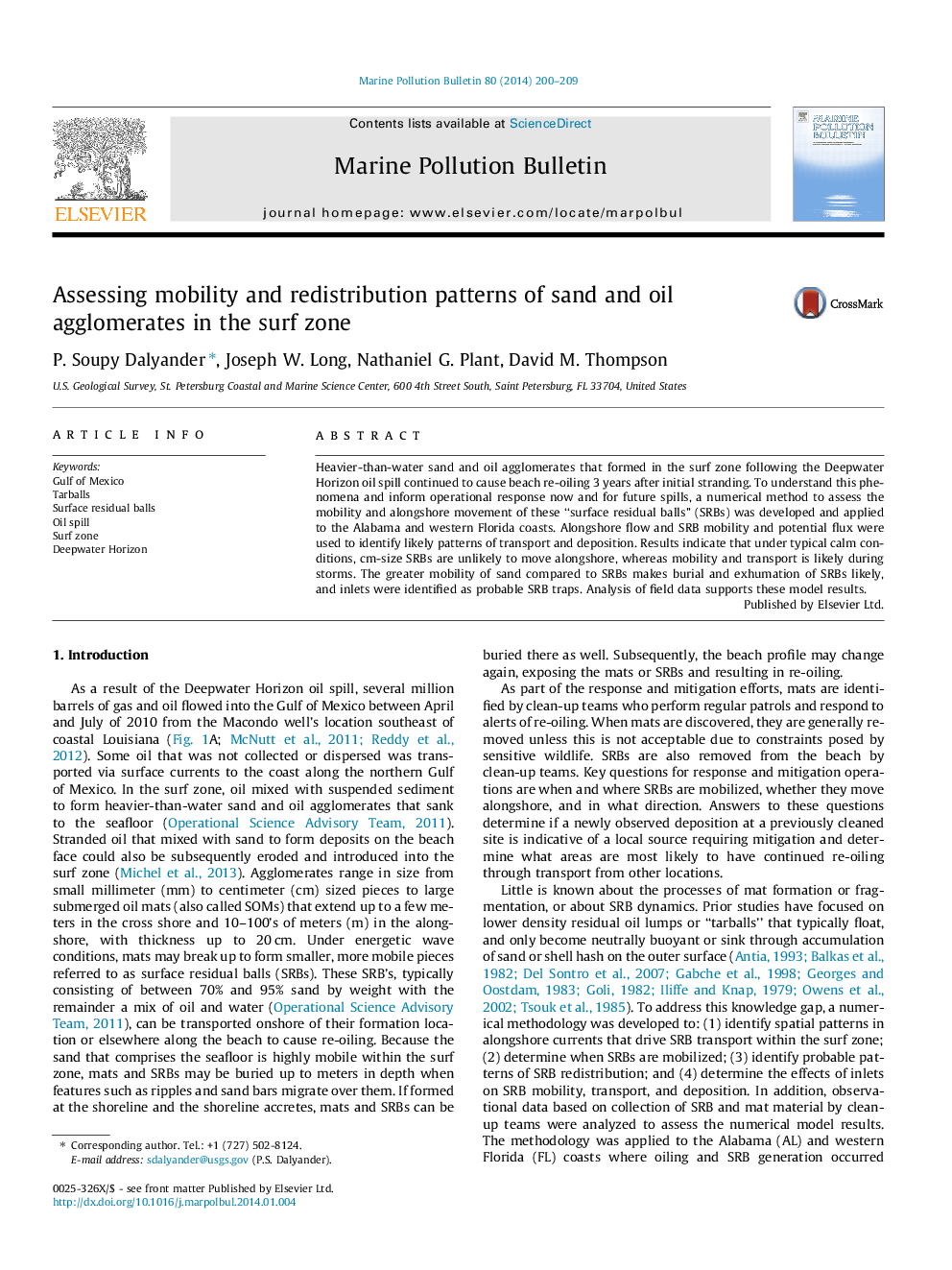| Article ID | Journal | Published Year | Pages | File Type |
|---|---|---|---|---|
| 6358053 | Marine Pollution Bulletin | 2014 | 10 Pages |
Abstract
Heavier-than-water sand and oil agglomerates that formed in the surf zone following the Deepwater Horizon oil spill continued to cause beach re-oiling 3Â years after initial stranding. To understand this phenomena and inform operational response now and for future spills, a numerical method to assess the mobility and alongshore movement of these “surface residual balls” (SRBs) was developed and applied to the Alabama and western Florida coasts. Alongshore flow and SRB mobility and potential flux were used to identify likely patterns of transport and deposition. Results indicate that under typical calm conditions, cm-size SRBs are unlikely to move alongshore, whereas mobility and transport is likely during storms. The greater mobility of sand compared to SRBs makes burial and exhumation of SRBs likely, and inlets were identified as probable SRB traps. Analysis of field data supports these model results.
Related Topics
Physical Sciences and Engineering
Earth and Planetary Sciences
Oceanography
Authors
P. Soupy Dalyander, Joseph W. Long, Nathaniel G. Plant, David M. Thompson,
